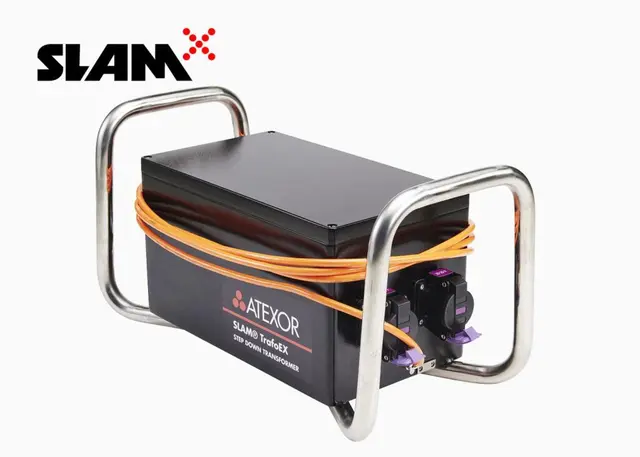Introduction
For electrical work in mines, chemical plants, and factories, you need tools that won’t cause a disaster. The safest way to send power is through an explosion-proof splitter box, which keeps the surfaces of live parts below the temperature at which gases or dust can catch fire. With dual ATEX and IECEx approval, Finnish-engineered sturdiness, and decades of field-proven dependability, the splitter box Atexor range takes this idea to a new level. Because of these things, Atexor is the world’s most trusted expert on distributing power in dangerous areas.
What is an Explosion‑Proof Splitter Box?
A splitterbox splits an incoming feed into several secured outputs. Sparks or high surface temperatures from regular units can release gas or dust clouds in dangerous areas. So, an explosion-proof splitter box protects live parts by enclosing them in strong, flame-resistant housings. It uses approved Ex plugs and glands and keeps the surface temperature below the point where it could catch fire.
Low-voltage choices (24 V–230 V) and fully sealed IP66/IP67 enclosures for Zones 1 and 21 are available in the splitter box Atexor line. IEC 60079-10-1 states these zones are places where an explosive atmosphere is “likely to occur during normal activity.” Compared to regular boards, Atexor units are lighter and less likely to rust. They also keep their certifications even when the temperature outside is +55°C.
Why Choose Atexor?
Atexor combines a Scandinavian engineering style with decades of experience working in dangerous areas. These factors elevate the splitter box Atexor line to the status of an industry standard for approved power distribution.
- Rugged Design: The IP66 sealing removes dust and water, and the soft-shell rubber frame handles drops.
- Verified Compliance: The dual ATEX-IECEx and UKCA certificates cover Zones 1/21, immediately making testers happy.
- Field-Proven: With no problems, a North Sea FPSO turnaround logged 1,600 man-hours on five units, cutting cable-laying time by 18%.
- Industry Acclaim: HazardEx “Technical Innovation” 2024 has chosen the SLAM series as a finalist.
- Lifetime Value: A 10-year parts program, Finnish build, and batch testing make sure that service is stable and customization is easy.
That mix keeps projects safer, moves them faster, and stays well below budget.
Certifications & Safety Standards
With dual ATEX and IECEx approvals, every splitter box Atexor unit leaves the workshop safe to use in Zone-classified environments. It helps make sure that the installation goes smoothly and quickly. Global compliance paperwork is simple because the same explosion proof distribution box has marks from the UKCA and the EAC. Still, people must match scores to risks before turning on tools.
- You can use a Zone 1 (gas) or Zone 21 (dust) license in Zones 2 and 22.
- Check that the power distribution unit has the following markings: Ex II 2G/2D, class T4 ≤ 135°C, voltage, and current limits.
- Keep conformity reports on site; auditors may ask for the original certificate numbers during safety checks.
Dropping the rating is simple, but raising it could mean extra work, lost time, or fines.
Key Features & Benefits
Every splitter box Atexor makes is designed with the user in mind and uses high-quality materials. Here are some of the most important technical details and why they matter on-site:
- GRP or 316 stainless enclosure – shells that don’t rust or corrode can handle poisons and salt spray for decades of use with little upkeep.
- Modular and stackable layout – detented feet let teams connect multiple units, cutting down on wire runs and making temporary power sharing easier.
- The box has IP66/IP67 ingress protection, which means it is dust-tight and water-resistant. It can withstand high-pressure wash-downs and rain floods without exposing any live parts.
- Lighting up circuit breakers with simple LEDs lets you see their state at a glance, saving time and making workers feel safer and more confident.
Together, they make the splitterbox a rigid, explosion proof distribution box that is known and trusted around the world.
Use Cases & Industrial Applications
From food production to overhauling petrochemicals, splitter box Atexor units are essential in high-risk fields:
- Turnarounds in oil and gas: You can safely route power inside tanks, turbine cages, and scaffolding. One splitter can power four Ex lights and a gas detector, so you don’t have to use as many transformers.
- Mining below ground: GRP housings are lighter than steel ones, so they are easier to handle and can handle rough dust better.
- Spray-drying lines for pharmaceuticals: During batch changes, antistatic barriers keep cleanliness standards high and stop dust from igniting.
- CIP shutdowns for food and drinks: Eleventh-vapor settings depend on the splitterbox to keep cleaning tools and sensors powered up without causing sparking problems.
Installation & Maintenance Best Practices
These tips will ensure that every Atexor splitterbox application is as safe, reliable, and legal as possible.
- Check the zone match. Before entering a secret area, check the sign to ensure it says “Zone 1/21.”
- Using approved plugs is best. Only Ex plugs that fit together properly keep the flame path in the container.
- Apply torque to seals. To keep GRP threads from cracking, follow the manufacturer’s pressure tables.
- Strain relief on the route. If you don’t want people to trip, hang the input lead on allowed hooks.
- Serial numbers for documents. For audit trails, each machine comes with its certification report.
Routine upkeep is pretty simple: look for damage to the casing, test the earth connection occasionally, and change the gasket every five years. Because the splitter box Atexor works as a power distribution unit, one check covers both functions, lowering the total cost of ownership.
Buying Guide
Four questions will help you pick the correct box:
- Which area? Zones 0–20 require different equipment, while Zones 1–22 can use the splitter box Atexor.
- Power and plugs? Match plug type (CEAG, ATX, etc.) and site power (24 V–230 V).
- Conditions in the area? High-temp models can handle temperatures up to +55°C, and chemically potent poisons won’t hurt them.
- Supplier’s good reputation? Look for repair spares and papers that are trackable. Atexor parts have warranties for 10 years.
You can change the wire lengths, breaker curves, or container colors within the same ATEX file if a standard model doesn’t work. This way, you don’t have to pay much money for recertification. Instead of redesigning the whole system, buyers with non-Ex boards can get insurance approval faster by adding a certified explosion proof distribution box.
Conclusion
Picking the right explosion-proof power hub can mean the difference between having no downtime and paying a lot for downtime. On oil rigs, in mines, and across chemical lines, the splitter box Atexor range provides approved safety, tough durability, and plug-and-play ease. You can look at the datasheets, match models to your zone ratings, get a custom price, or talk to an Atexor expert. Protect crews and income with a system that works in the worst conditions.
FAQs:
Where can I use an Atexor explosion-proof splitter box safely?
Any place classified as Zone 1 gas or Zone 21 dust, such as chemical mixers, grain bins, and offshore platforms.
What makes Atexor’s explosion-proof splitter box different from standard splitter boxes?
It has flame-proof housing, Ex plugs, and low-voltage generators in one unit. A third party has approved these parts for use in dangerous areas.
Can I customize an explosion-proof splitter box for specific project needs?
Yes, Atexor can make unique cable lengths, socket mixes, and even color coding, as long as they stay within the limits of current ATEX certificates.
What maintenance does an explosion-proof splitter box require?
The unit complies with the rules by getting regular eye checks, earth-continuity tests, and seal checks every five years.
How long does an Atexor explosion-proof splitter box typically last?
If you take good care of it, the design life is longer than 15 years, and many units are still in use after 20 years.
Is the installation of an explosion-proof splitter box complicated?
No, regular M6 hooks and Ex connectors make setup easy for workers who know what they’re doing.
Can I retrofit an existing system with an explosion-proof splitter box?
Most of the time, yes. You can meet compliance without rewiring the whole circuit by removing substandard boards with power distribution unit labeled Atexor boxes.

